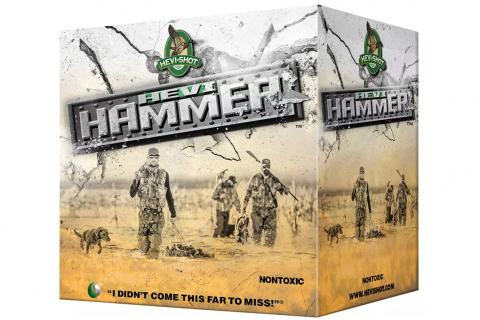
The Best Lead-Free Shotshell Alternatives
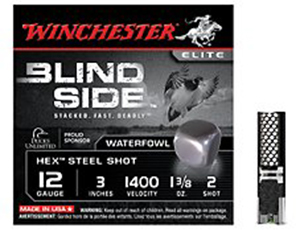
It has been over 25 years since the ban on lead shot for hunting waterfowl took effect. In spite of this length of time, a tremendous amount of misinformation still exists regarding non-toxic shot. In order for beginners and experienced waterfowl hunters alike to find the non-toxic shot that is right for them, let’s take a close look at the various forms of non-toxic ammunition. See Cabela's lineup of lead-free shotshells right here.
According to the U.S. Fish and Wildlife Service (USFWS), non-toxic shot is any shot type that does not cause sickness or death when ingested by migratory birds. Lead, a metal with no biologically beneficial role, becomes toxic upon entering the digestive system of game birds. Once ingested, stomach acids and mechanical processes break the lead down into particles that are absorbed into the bloodstream. Particularly heavy hit were birds such as diving ducks, loons and swans because they feed off the bottom of ponds, a place where much of the lead shot ends up. It has been
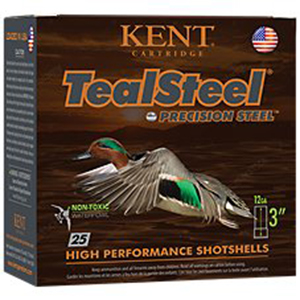
found that even low concentrations of lead negatively impacts energy storage, a key component in the survival of migratory birds. In addition, scavengers such as hawks and eagles can die from ingesting dead or dying waterfowl.
Lead also slowly and naturally dissolves, allowing it to enter the groundwater. This creates the potential to enter not only our water sources but our crops and animals as well, which ultimately affects humans as consumers. For these reasons, lead shot was banned for all waterfowl hunting in the U.S. in 1991. Many states have additionally prohibited lead shot in specified areas.
There are currently 13 types of various non-toxic shot types that are approved by the USFWS. By examining the composition of several types of waterfowl non-toxic shotshells and by analyzing how they perform and what circumstance they are designed for, you can make the right choice for your waterfowl hunting experience.
Steel
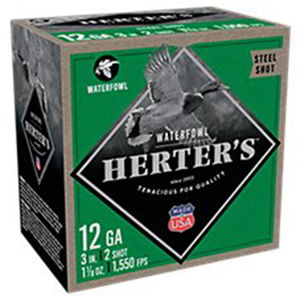
One of the most popular options in the non-toxic shotshell market is steel. Steel shot is made through a process called atomization, which produces shot of various size and hardness. It is known for its efficiency and durability.
When it comes to shotshells, there are two main differences between steel and lead. First, steel is less dense than lead; it weighs one-third less
than a lead pellet. Due to its lightness, steel produces less energy and may not kill as cleanly as lead at the same range. Shotshells that utilize aerodynamically-stabilized wads and premium-plated round steel shots help retain energy.
Secondly, steel is harder than lead. It does not change shape when leaving the shell. It spreads less and produces a denser shot pattern. When the shot hits, it will more likely penetrate the bird, which may lead to more bleeding. Using a more open choke (improved cylinder or modified choke) will alleviate this concern especially within 50 yards. Clearly, steel works differently than lead. But with the right modifications in shells and chokes, the results with steel are just as effective.
HEVI-Shot
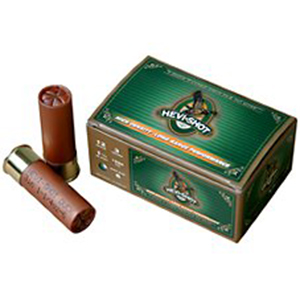
Made of a combination of tungsten, nickel and iron, HEVI-Shot has enjoyed quite a run since its debut in 2001. It’s hard and heavy. Hevi-Shot is heavier than lead and hard like steel. The downside is its price. You will either use it and love it or stay away from it because of the high price.
If you're willing to foot the bill, the benefits are clearly visible. With a higher pellet count on target and a higher down-range velocity, the Hevi-X touts itself as “Deadlier at Distance.” This is why waterfowl hunters choose to pay the price.
A welcome addition to the Hevi-Shot line is the Hevi-Shot Sub-Gauge Waterfowl and Upland Shot. This shotshell offers all the hard-hitting power you expect in a non-toxic shell but is designed for your 16, 28 and .410 shotguns. You will get the same patterning and performance with your sub-gauge as you do with your 12 and 20 gauge shotguns.
Bismuth-Tin

Unlike steel, the bismuth-tin alloy in bismuth shot is as close to pure lead as you can get
in terms of weight and density. This makes the bismuth shell a great alternative to steel for your older shotguns that cannot handle the hardness of steel shot. In addition, the malleability of the bismuth-tin alloy ensures that the shot remains intact upon impact, making a clean kill more likely.
Tungsten

When it comes to knock-down power, tungsten shells fit the bill. Tungsten shot is typically a combination of tungsten and either a plastic polymer or iron. This is the closest non-toxic alternative to lead shot you will find. Similar to the lead-like qualities of the bismuth non-toxic shot, tungsten works well with older barrels or high-grade fixed choke barrels, making it a great choice for older shotguns. Patterns appear to be consistent into the 40- to 50-yard range.
The tungsten pellets perform with superior muzzle velocity as well. One thing you will find with tungsten shotshells is a higher price tag. This comes with higher performance, of course. And ultimately, while you might pay more per shell for these, you will find that accuracy and velocity means you will shoot fewer shells and kill more birds assuming your aim is true.
Concerns About Non-Toxic Shot
While we can all agree that there are real concerns regarding the use of lead-based shot as it pertains to the environment and the wildlife that inhabits it, lead shot has historically been the go-to element in ammunition. The mandate for non-toxic shot and the resulting production of new, non-toxic shot left many hunters concerned. Will the non-toxic shot perform as well as lead? What will the cost of this new shot be? Will new, harder materials damage a shotgun that’s accustomed to lead in its barrel? These concerns were real, but they were not insurmountable.
First of all, the cost of non-toxic ammunition is greater than that of lead. Lead is a natural and plentiful material, making it cheap. Non-toxic shot, on the other hand, is pricier. Manufacturing metal alloys is a big jump. The non-toxic shot industry has done its best to produce shot that is so effective that the accuracy of the hunter might minimize the number of shells it takes to make a clean kill. This efficiency (the ratio of shots to kills) is one that the hunter must appreciate to feel better about the higher cost per shell.
Secondly, non-toxic shot performs differently than lead-based shot. That isn’t to say it’s not just as effective. As with the use of any new piece of gear, practice and experience can overcome any doubt. Ultimately, it isn’t the shotshell that makes the kill; it's the shooter. Learn your ammunition as you learn your weapon or any other piece of gear.
Finally, some hunters have raised concern about the potential for damage to the barrel with the use of harder materials, such as steel, that are used in non-toxic shotshells. Lead is certainly a softer material than steel. Thankfully, materials engineers compensate for this when they create alloys; shot such as bismuth and tungsten-matrix address this particular concern. Wad technology has also dramatically changed the game over the last 25 years with newer and better designs by all of the current manufacturers. The use of specific chokes also alleviates concerns of barrel damage.
Ultimately, as responsible hunters and citizens, we can acknowledge the need for the non-toxic alternatives to lead. And as intelligent humans, we have designed new types of ammunition that address the environmental concerns while maintaining the effectiveness of the shot.
The bottom line is that change is inevitable. We recognized a problem with lead shot as it pertains to wildlife and our environment and we adapted by creating new types of shot that are non-toxic and just as effective. We have adapted the mode of delivery when needed through the use of different wads or the addition of a different choke. We have rethought our range as we notice different patterning and penetration.
It was just a matter of time before we got used to the new ammunition and began to adjust our ways. Hunting has evolved, it will continue to evolve and our choices in ammunition can evolve right alongside.
- 45457 views

